Benefits of LED Lighting
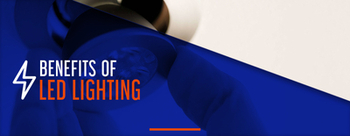
What Is LED Lighting?
This is a type of lighting that produces light using light-emitting diodes. Throughout the United States, home and building owners are replacing old incandescent bulbs, lamps and sockets with light-emitting diode (LED) fixtures. LED lights have grown in popularity because they are safer, more efficient and longer-lasting than incandescent bulbs.
How Long Do LED Lights Last?
An LED light can last years longer than an incandescent bulb. During the lifespan of an LED light, you will likely save a lot of money that you would otherwise spend on regular bulbs. LEDs also emit light more efficiently with less heat and virtually no harmful UV rays. Moreover, LEDs offer the greatest color accuracy of all lighting options. This information below covers everything you need to know about LED lights.
1. LED Light Lifespan
LED lights last longer compared to other light types such as fluorescent, metal halide and sodium vapor lights. An LED can last anywhere from 20,000 to 50,000 hours, far longer than the nearest competing options on the market. Compared to the once-ubiquitous incandescent bulb, LED lights last up to 50 times longer. The longer lifespan of LEDs allows you to save money on your lighting costs because lights burn out far less frequently. In addition, less maintenance will be required replacing lamps due to the long LED lamp life.
2. LED Energy Efficiency
LED lights require far less energy than other light types and are therefore one of the most efficient lighting options on the market. Compared to fluorescent lights, sodium lights, metal halides and incandescent lights, LEDs consistently outperform all the competition in terms of longevity, energy conservation and illumination quality. All of these advantages make LEDs the most economical and practical of lighting options for homes, buildings and workspaces.
3. LED Lights Are Cool and Safe
Compared to other lighting options, LEDs are one of the safest options on the market. With most bulbs and lighting tubes, one of the most hazardous effects is their emission of heat. While incandescent bulbs convert at least 90% of the energy they use into heat, LEDs remain relatively cool throughout each usage cycle. As such, LEDs are far more efficient than incandescent lights.
4. LED Lights Are Compact in Size
LED lights are relatively small and therefore consume less space than other lights. Due to the small size of the lights, the fixtures that hold LEDs are also smaller than the fixtures that hold fluorescent tubes and incandescent bulbs. The compact size of LED light fixtures makes then suitable in a wider range of areas and spaces. LED lights fit into vehicles and living spaces as well as closets, sheds, crawlspaces and other hard-to-reach areas.
5. LEDs Have Superior Color Rendering Accuracy
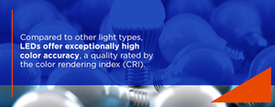
Compared to other light types, LEDs offer exceptionally high color accuracy, a quality rated by the color rendering index (CRI). Whereas most other lights offer a dim or yellow rendering of objects, LEDs render colors with near-perfect accuracy. In most living and working quarters, color accuracy is a crucial quality. If you work with colors regularly, you should know the exact tints, tones and shades at hand. With LED lights, you can get a much clearer and more color-accurate view of each object at your disposal.
6. LEDs Emit Targeted Light
LEDs direct light more efficiently by restricting light emissions to 180 degrees. Incandescent bulbs, by contrast, emit light a full 360 degrees. In most uses, you are likely to have your light fixtures set against a wall or corner or directed to beam outward or at an angle. When incandescent lights are situated in these positions, half the light emitted goes to waste since the bulb is beaming backward as well as forward. Even if you point an incandescent bulb downward from your ceiling, the circular emission will light the ceiling more than the objects below. Since LED lights beam 180 degrees outward, no light is wasted.
7. LEDs Are Diverse and Flexible
Thanks to the compact size of LED lights, they can be used for a multitude of purposes. If you wish to have a string of lights that line your wall or doorway, you could arrange the LEDs as you please in vertical and horizontal sequences. If you have a collection of small hand tools for arts and crafts, you could place LEDs in your work case and onto your clipboards. When placed inside of cabinets and flashlights, LEDs will help you save money by lasting longer than traditional lights. In addition to lighting up your living spaces, LEDs can improve your lighting situation in numerous settings.
8. LEDs Are Solid State Light
As solid state lights (SSLs), LEDs do not require bulb encasement. Incandescent lights, by contrast, must be housed in glass bulbs, thereby adding to the world’s landfills. Since LEDs do not require bulbs, each LED is far more compact and the production that goes into LED lights is a lot friendlier to the environment.
9. LED Dimming Capability
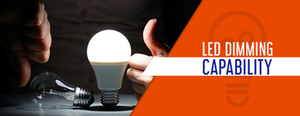
LED lights can be adjusted to any level of power capacity consumption on a scale of zero to 100. Therefore, if you do not want your living room lit in full, you could lower your LED lights to a half-lit or quarter-lit level and enjoy a dimmer lighting environment. You do need LED-specific dimming hardware to use this option because LEDs are not compatible with traditional bulb-dimming devices.
When you dim an LED light, you can also save energy and prolong its lifespan. This provides a huge advantage over metal halides, which actually lose efficiently and burn out sooner when used at dimmed capacities.
Before purchasing an LED dimmer be sure to confirm that you LED lamp is compatible with your LED dimmer.
10. LEDs Power On and Off Instantly
LED lights will power on completely the second you flip the switch. Unlike metal halides and some fluorescents, which take time to warm up to their full lighting capacity, LEDs require no warm-up time. Moreover, LEDs can be switched off and on repeatedly with no degradation or accelerated power consumption. When you need light instantly or intermittently in a tight situation, an LED would be your most convenient option.
11. LED Lights Are Eco-Friendly
Compared to mercury vapor lights and fluorescent tubes, which both contain mercury, LEDs are a lot friendlier to the environment. The mercury content in conventional bulbs and tubes necessitates special handling and shortens the life of regular lighting products. LEDs, by contrast, are more eco-friendly to make, use and recycle.
12. LEDs Eliminate UV Emissions
LEDs emit most of their energy in the visible portion of the electromagnetic spectrum. A tiny percentage of LED energy is emitted in the infrared spectrum, but virtually none is emitted in the ultraviolet spectrum. This means LED lights are safe for paintings and other items that can degrade from prolonged exposure to ultraviolet emissions.
13. LEDs Function in Cold and Hot Temperatures
LEDs will function in a full range of inhabitable temperatures, from subzero winters to humid summers, all with no loss in performance quality.
14. Various Color Options
LEDs are produced with a variety of correlated color temperature (CCT) options. If you wish to light your room in a yellowish warm tone, you could find an LED to match that value. If you wish to have your workspace lit up white and bright, you could opt for a white CCT value. There are also LED options available for color changing lights with the RGB lighting spectrum.
LED Lighting Frequently Asked Questions
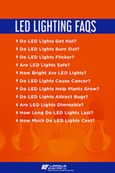
With so much talk in the news about LEDs in recent years, a lot of people are asking the same question — are LED lights better? While it all depends on what you are looking for in a light, most people agree that LEDs outperform all of the other light types. For example, in the LED vs. incandescent light bulbs debate, LEDs win out in virtually every category. If you want a light that retains a cool temperature and can last for years without needing to be replaced, LED lights are your best option. If you want a light that can easily be dimmed yet light your rooms with vivid color accuracy, LEDs are the best choice.
1. Do LED Lights Get Hot?
No, LED lights do not get hot. Unlike incandescent bulbs and fluorescent lights, which covert most of their energy into heat, LED lights remain relatively cool, even after hours of use. This results in huge energy savings that prolong the lifecycle of LED lights and make it possible to light up rooms during warmer months without creating unwanted heat.
2. Do LED Lights Burn Out?
While LED lights do eventually burn out, their overall lifespan is far longer than that of other light types, such as fluorescent tubes and incandescent bulbs. Overall, LED lights last anywhere from 20,000 to 50,000 hours — up to 50 times longer than incandescent bulbs, which typically last between 1,000 and 2,000 hours.
3. Do LED Lights Flicker?
In general, no, LED lights rarely flicker because they do not contain the filaments that are vulnerable to this issue. However, there are rare cases of flickering in LED lights, but this usually only happens when you connect LEDs to an incompatible dimming device. To avoid flicker, do not connect LEDs to old dimming hardware designed for incandescent and fluorescent lights.
4. Are LED Lights Safe?
LED lights are one of the safest lighting options available today. Unlike fluorescent and incandescent lights, which contain filaments and emit heat, LEDs maintain room temperature. Moreover, LEDs are safer than filaments and do not require bulb encasements.
5. How Bright Are LED Lights?
At full capacity, LED lights are a lot brighter than incandescent lights. LED lights beam forward and therefore maximize their light potential, whereas incandescent lights give off a circular emission that is largely wasted on the spots behind the bulb. LED lights also emit most of their energy in the visible portion of the electromagnetic spectrum, with little infrared and virtually no ultraviolet emission. LEDs also rate highest on the color rendering index (CRI), which measures the accuracy of color illumination.
6. Do LED Lights Cause Cancer?
No, LED lights have not been responsible for any documented cancer cases. LEDs are safe because they contain no mercury and do not emit ultraviolet rays. While some concern has been raised about the blue light present in LEDs, this has been no different than the general concerns regarding the blue lights emitted by computer devices. In short, blue light may affect your sleeping patterns, so turn these devices off at night.
7. Do LED Lights Help Plants Grow?
Some do. While normal LEDs intended for household use are not effective at plant cultivation, you can purchase LED grow lights that are specially designed for horticulture. LED grow lights exclusively emit the lighting wavelengths recognized by plants. LED grow lights are preferable to halogen bulbs, which emit heat that can inhibit plant growth.
8. Do LED Lights Attract Bugs?
No, LED lights do not attract insects. Bugs are attracted to two features in lights — heat and UV rays. For these reasons, incandescent bulbs can attract bugs and should not be used on porches or anywhere bugs could be a problem. While LED lights can generally serve as bug repellents, yellow LEDs are especially effective at warding off bugs.
9. Are LED Lights Dimmable?
Yes, LED lights can be dimmed to any level between zero and 100. However, you need an LED-specific dimming device to use this option. LEDs are usually not compatible with older dimming devices that were made for incandescent bulbs and fluorescent tubes. Even if you can get an LED to work with one of those older dimming devices, the incompatibility might cause the light to flicker.
10. How Long Do LED Lights Last?
LED lights have an average lifespan of 50,000 hours. Incandescent bulbs, by comparison, only last between 1,000 and 2,000 hours. If used 12 hours per day, the 50,000-hour life of an LED could be stretched out to 11 years. If an LED light is used at dimmer intensities, its lifespan could be stretched out to 100,000 hours.
11. How Much Do LED Lights Cost?
An LED light will typically sell for several dollars more than an incandescent bulb, but you earn that money back tenfold because of the increased lifespan of LEDs. For example, a 25,000-hour LED light might cost $5, whereas a 1,000-hour incandescent bulb may cost $1. However, the LED would last 25 times longer at only one-fifth the cost of 25 incandescent bulbs.
LED Light Retrofitting and Installation
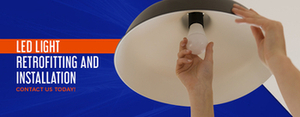
LED lights can vastly improve your living quarters in numerous ways. With the longevity and energy efficiency of LEDs, you can lower your energy bills and overall lighting costs. When installed throughout your house, LEDs could help keep your rooms cooler and also provide superior illuminating quality as you read, work or do anything that requires light.
Among homeowners and businesses in Westchester, Dutchess and Putnam Counties in New York, Lippolis Electric, Inc. is the most trusted name in LED retrofitting and installation. Our team performs retrofitting, installation and maintenance work on homes and buildings throughout the tristate area. To learn more about how we can transform your home or building, contact us today to schedule service or request an estimate.


